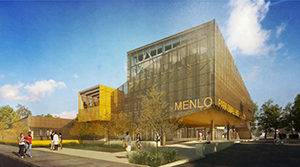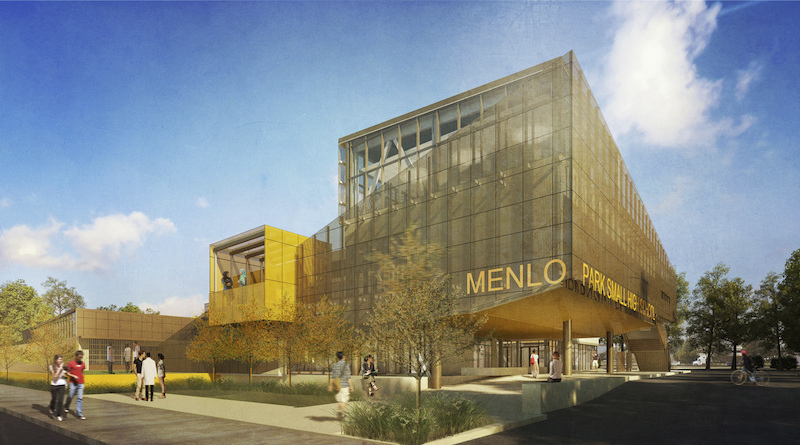TIDE Academy to Emphasize Bay Area Environment
By Jessie Fetterling
MENLO PARK, Calif. — Construction on TIDE (Technology, Innovation, Design and Engineering) Academy, formerly Menlo Park Small High School, is scheduled to break ground in May. Designed by LPA Inc., with local offices in San Jose, Calif., the project has a strong initiative to deliver innovative and engaging student environments.
Spanning nearly 44,000 square feet, TIDE Academy is designed to implement a project-based learning curriculum with an emphasis on college and career readiness in STEM fields. “With a focus on engineering and design education, TIDE Academy uses technology as the connector and the common language,” said Kate Mraw, design director at LPA Inc. “At the core of the school planning is the learning cluster: a ‘Junior Institute’ for grades 9 and 10, and a ‘Senior Institute’ for grades 11 and 12. This lead to unique and innovative educational adjacencies supporting a variety of space types — learning studios, huddle rooms, student and faculty collaborative spaces, and a dispersed administration concept.”

The public school uses its location at the south end of the San Francisco Bay to its advantage, providing opportunities to use community amenities near the site that will augment health, fitness and wellness programs. An outward-focused campus invites community, business and institutional partnerships to drive technology-based education, allowing the school to become a member of the community and extend to a variety of places outside the campus.
“With high-tech neighbors, TIDE Academy is in the center of the hub,” said Katia McClain, managing director at LPA Inc. “Therefore, engaging the community and sharing the educational opportunities within became a driving design strategy for the campus, both organizationally and architecturally. The design celebrates the innovation of the community while creating moments throughout campus for mentoring and access to the industries greatest talent.”
The building is organized to maximize exposure to daylight as well as views of the San Francisco Bay with a fluid indoor-outdoor connection throughout the space. It is stacked on three floors allowing abundant space for outdoor learning, while the L-shaped configuration allows direct access to an adjacent outdoor learning area from every interior space. This intentional design allows for flexible learning spaces and takes advantage of the coastal climate.
“The ‘hands-on’ learning strategies of the Menlo Park Small High School extend to incorporate innovative and responsive sustainable design strategies to make the building itself an interactive learning experience,” said Helen Pierce, design director at LPA Inc. “The U-shaped building wraps and protects a central courtyard from excessive sun and wind while allowing north light to flood interior spaces.”
While the building features classroom spaces, it also includes a makerspace, a coding lab dedicated to computer code education and software development, and a design lab for rapid prototyping and implementing design concepts. The design minimizes the building’s environmental footprint by conserving natural resources, reducing energy and water consumption, and generating less pollution and greenhouse gas emissions.
“The new high school is in an area that will be impacted by future sea-level rise,” Pierce added. “The planning of the school includes resiliency strategies such as elevating the first floor by 3 feet, locating primary electrical and the building Main Distribution Frame above the first-floor level and providing on-site renewable energy.”
A large, perforated metal scrim will shade the building by protecting it from direct glare and reducing solar heat gains. Stormwater will also be collected and used for the native plant and bio-retention planters on site. Increasing permeable surfaces on the campus, according to a statement, will also significantly reduce the runoff volume.
Even though the project is just in the beginning stages of construction, its design already received the Leroy F. Green award at the Coalition for Adequate School Housing (CASH) 38th Annual Conference earlier this year.

